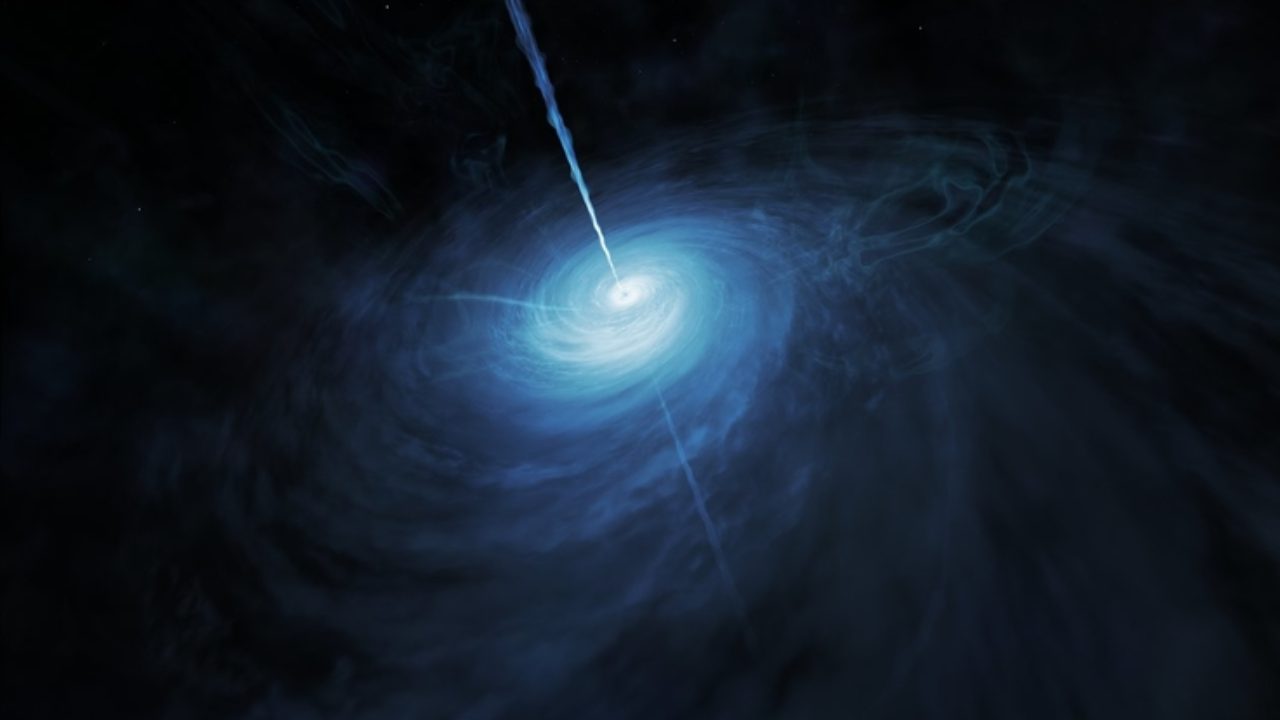For us on Earth, the brightest object in the sky is no doubt the Sun. But this fiery ball of light pales in comparison to quasars – giant, luminous cores of galaxies that radiate massive amounts of energy. Astronomers believe that quasars are a lot like monstrously hungry black holes at the centre of young galaxies. The brightness they emit comes from blasts of energy when objects spiral and fall into the gravitational whirlpool of quasars, getting heated to temperatures millions of degrees hot in the process. Quasars were thought to be way more abundant in the universe around 10 billion years ago, making them an object of great interest to astronomers studying the early evolution of our cosmos. According to researchers, the newly-discovered quasar was active when the universe was less than a billion years old – when the first of the galaxies in the universe were being formed. [caption id=“attachment_5892741” align=“alignnone” width=“1280”] This artist’s impression shows how J043947.08+163415.7, a very distant quasar powered by a supermassive black hole, may look close up. This object is by far the brightest quasar yet discovered in the early Universe. Image courtesy: NASA/ESA/Hubble[/caption] 12.8 billion years later, the Hubble telescope has now picked up on the object’s bright light – 600 trillion times as bright as our Sun. This beats the last such record held by a quasar, which was equal to the brightness of merely 420 trillion Suns. The team of researchers from University of Arizona
published their findings in Astrophysical Journal Letters. “We don’t expect to find many quasars brighter than that in the whole observable universe,”
said Xiaohui Fan, lead researcher on the study to university press. How could something so bright be overlooked by telescopes that are actively looking for such phenomena? Simply put, the quasar is almost a universe away – 12.8 billion light years. In fact, it was only spotted due to a rare physics phenomena called ‘gravitational lensing’. Gravitational forces that are very strong have the power to quite literally ‘bend’ the path of light passing through them. In the case of the newly-discovered quasar, the light from the quasar was warped roughly halfway point between the quasar and Earth. [caption id=“attachment_5892731” align=“alignnone” width=“1280”]
A visual representational of how gravitational lensing works. Image courtesy: NASA/ESA[/caption] This process magnified its intensity the intensity of the quasar 50 times and also split the image of the quasar, so it was visible at three different points in space at once. Without this high level of magnification, it would make it impossible for us to see the galaxy, said Feige Wang, another member of the team, to university press.
“We think there might be 10 to 20 such objects that we haven’t found because they would have looked fuzzy and colors not red-shifted enough,” Fan said. “This means that our traditional way of finding quasars may not work anymore, and we have to find some new, big data approach to broaden our search.” The quasar was first spotted by a ground telescope called the Multi-Mirror Observatory in Arizona, after which objects spotted in archive data from the Pan-STARRS1 in Hawaii,the Infrared Telescope Hemisphere Survey in UK and the WISE telescope in orbit were also scanned. Finally, Hubble confirmed it as a quasar that underwent ’lensing’ courtesy of the clearer view it gets from space.


)
)
)
)
)
)
)
)
)



